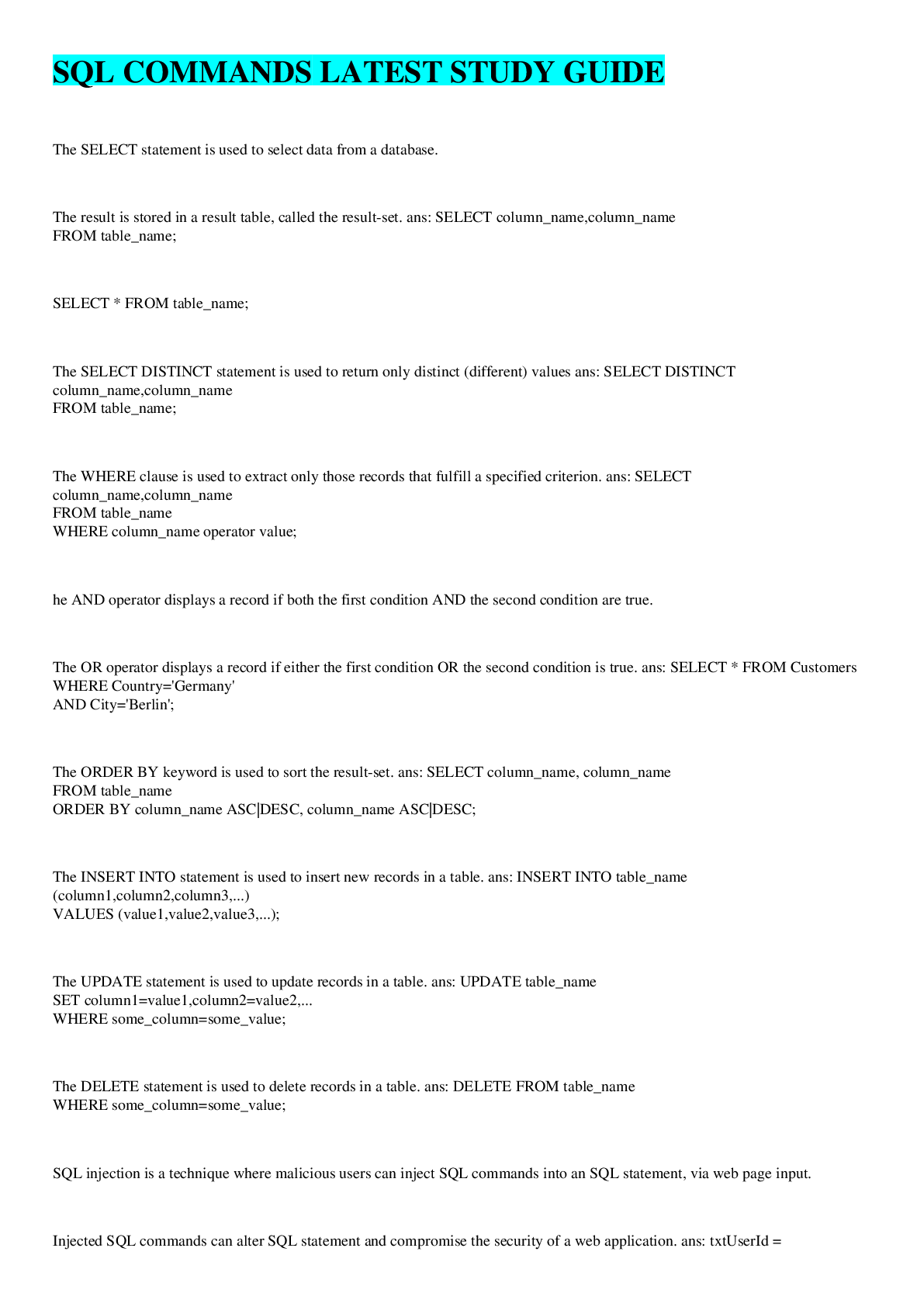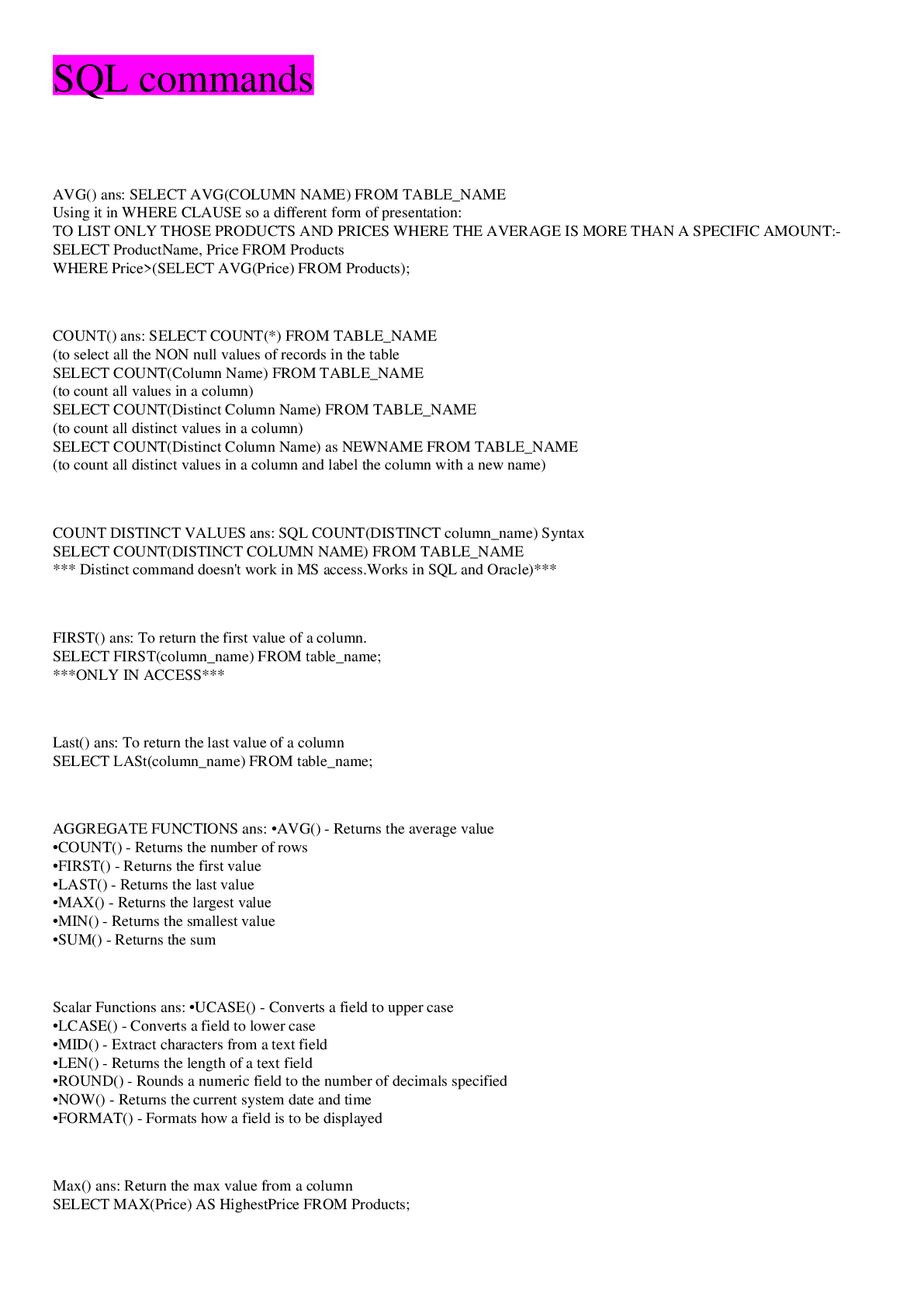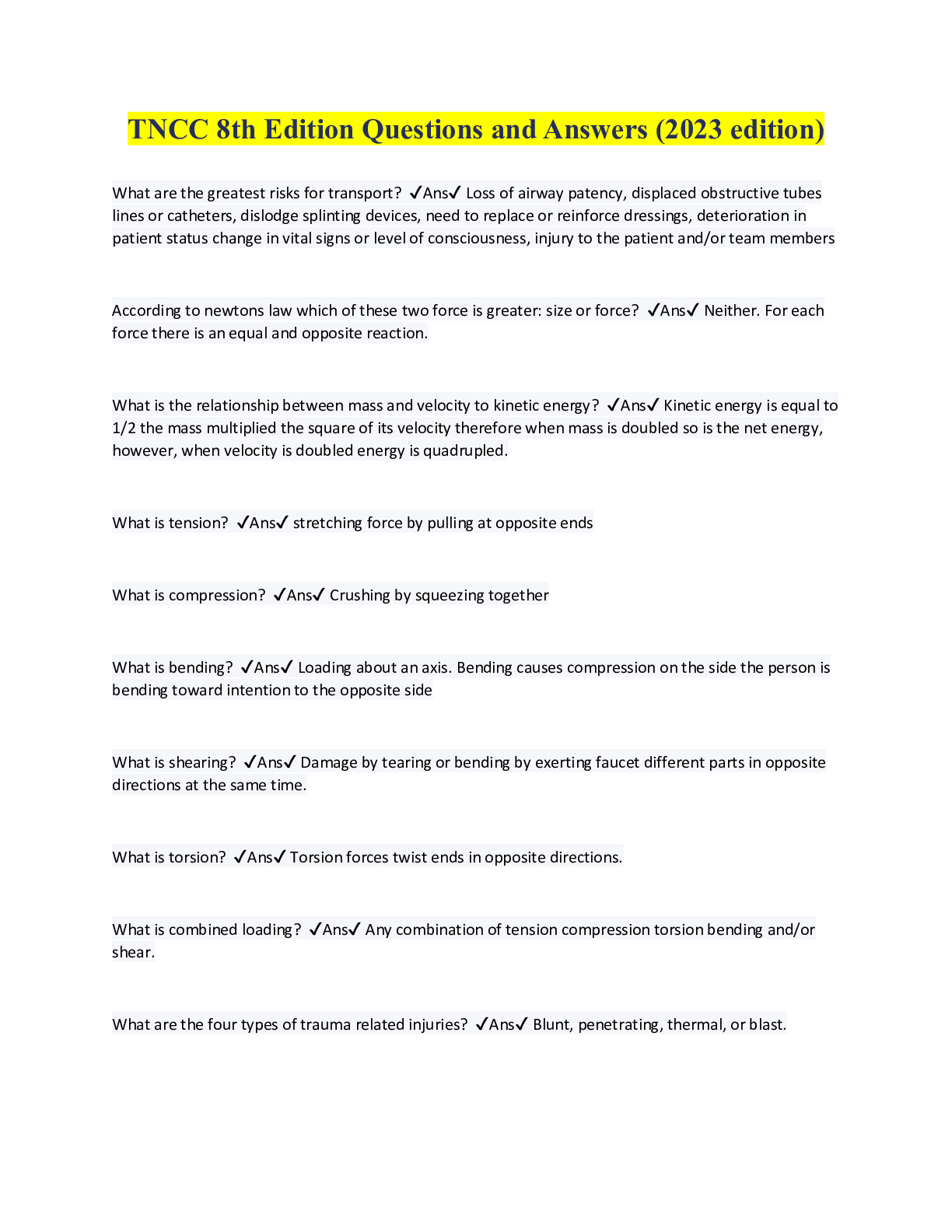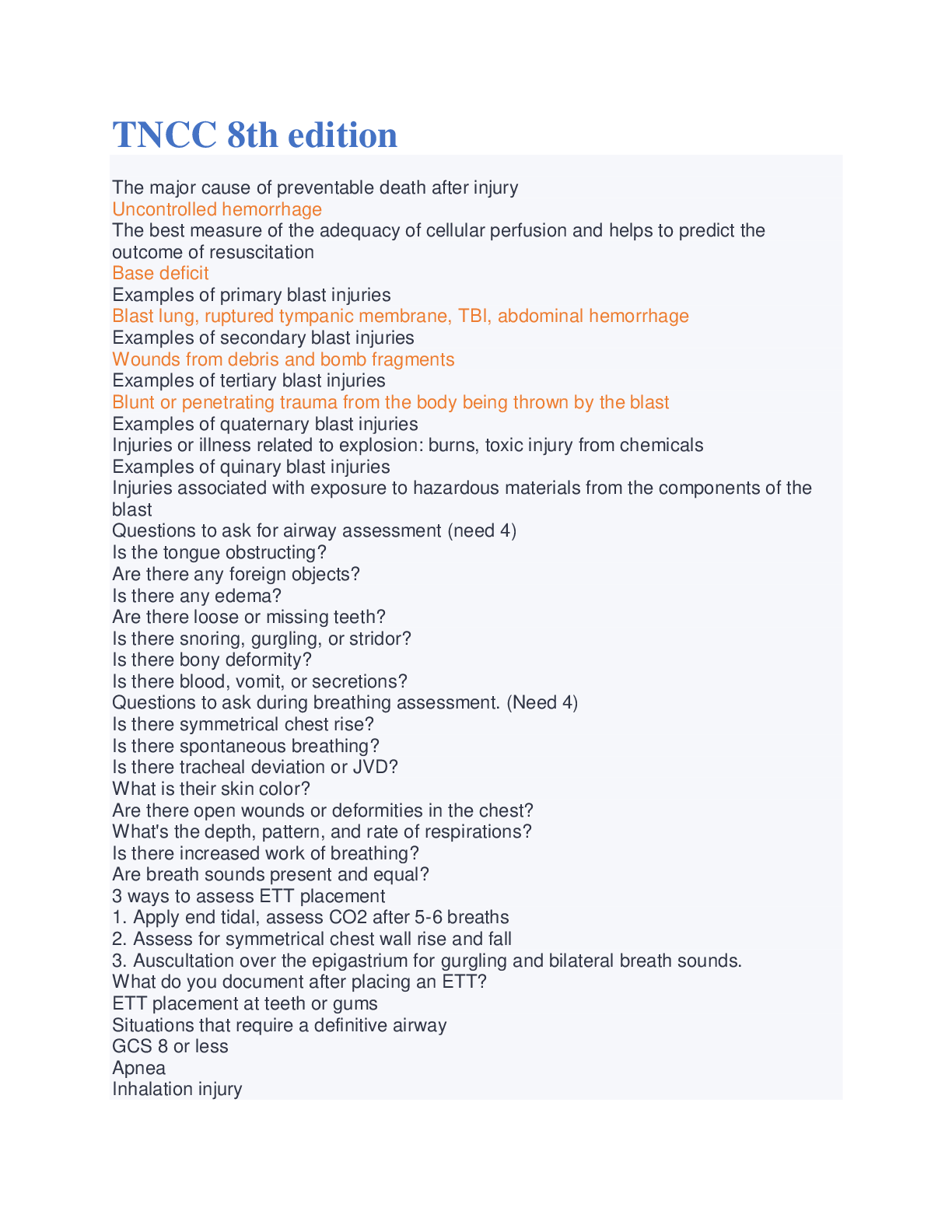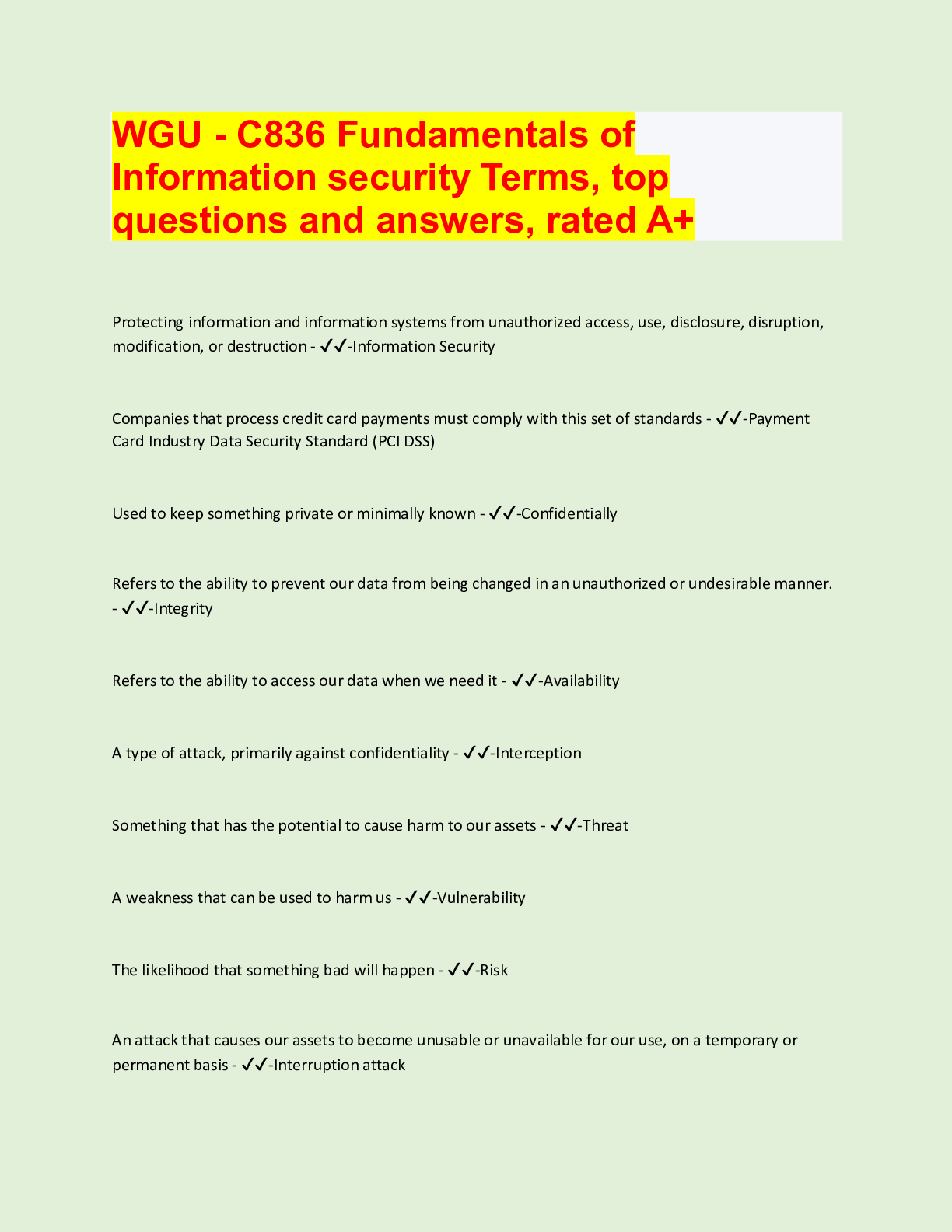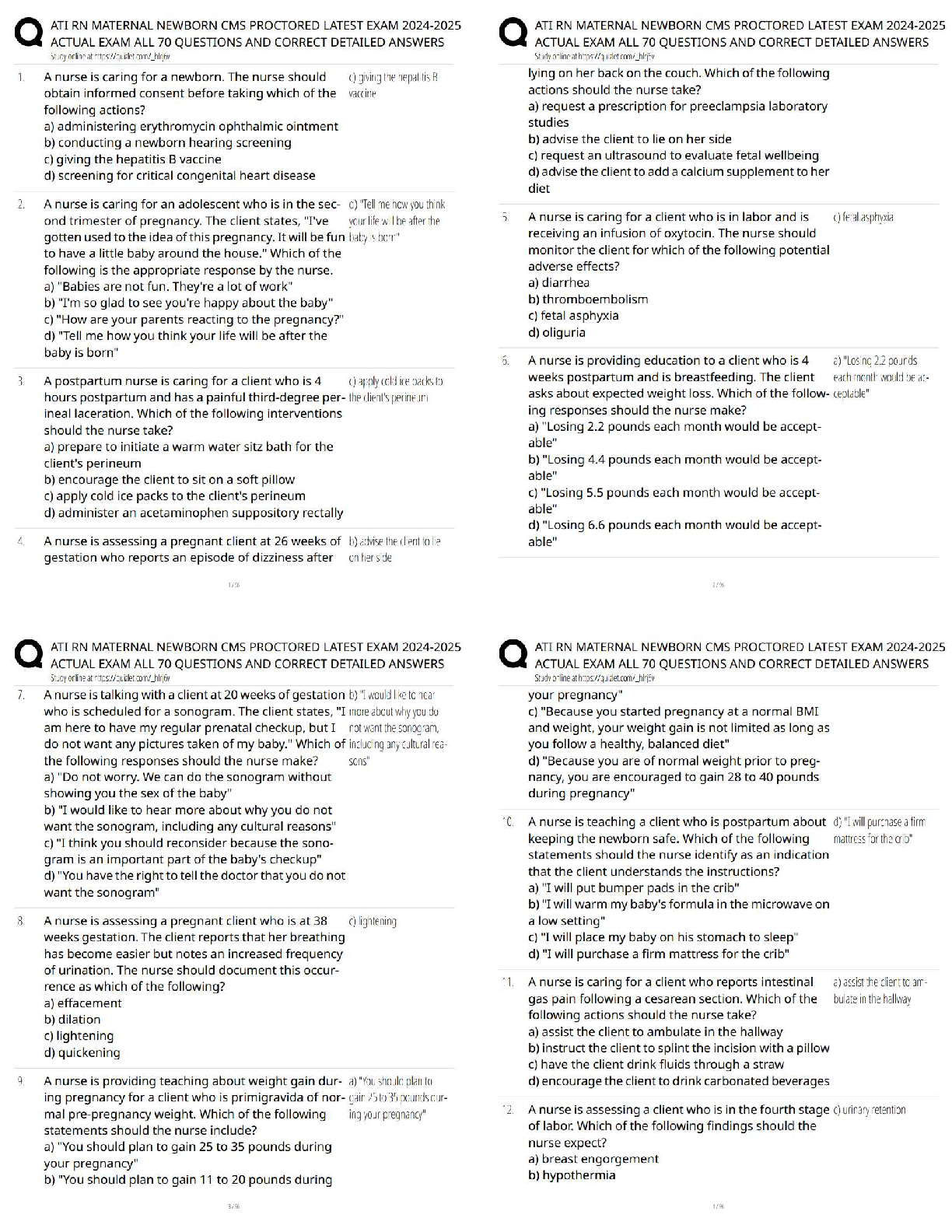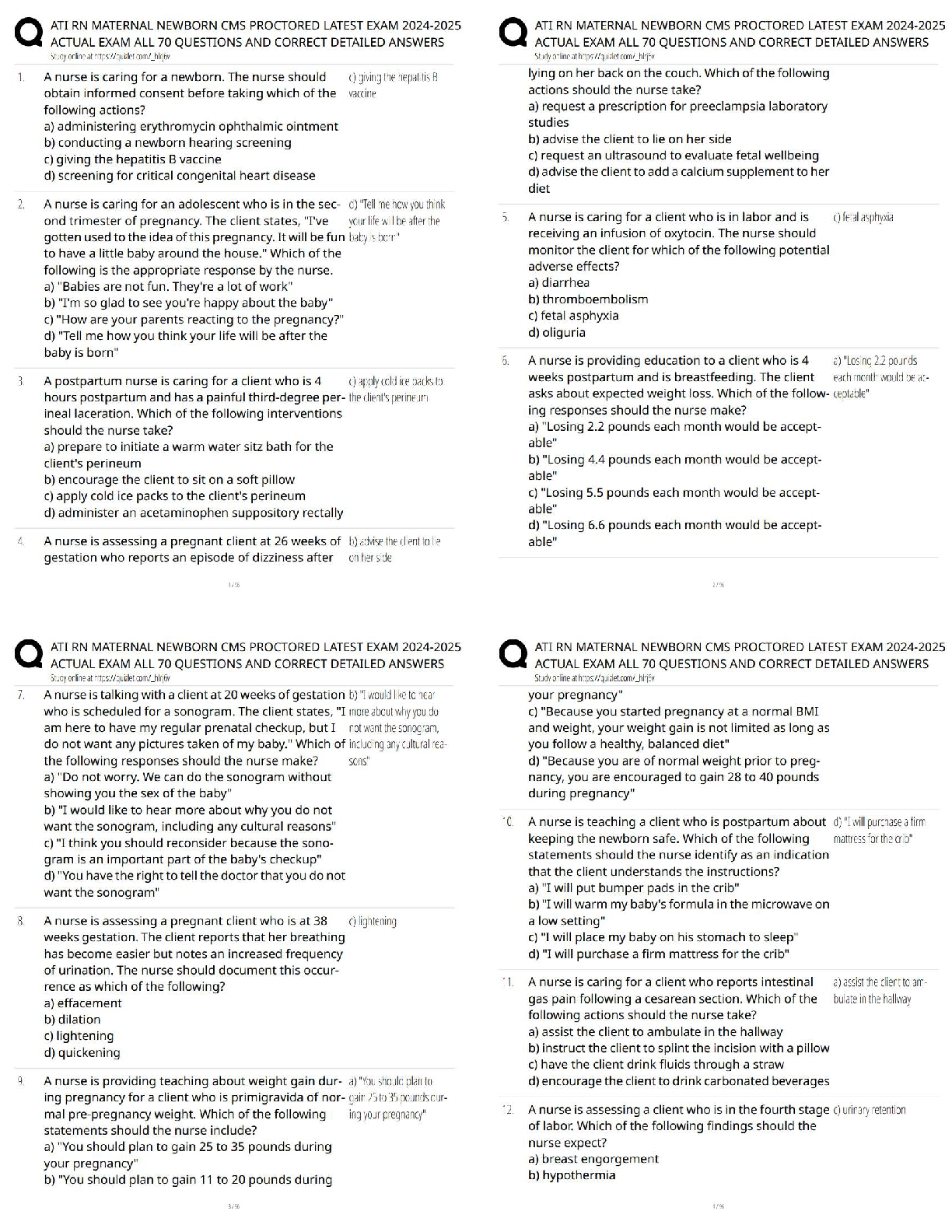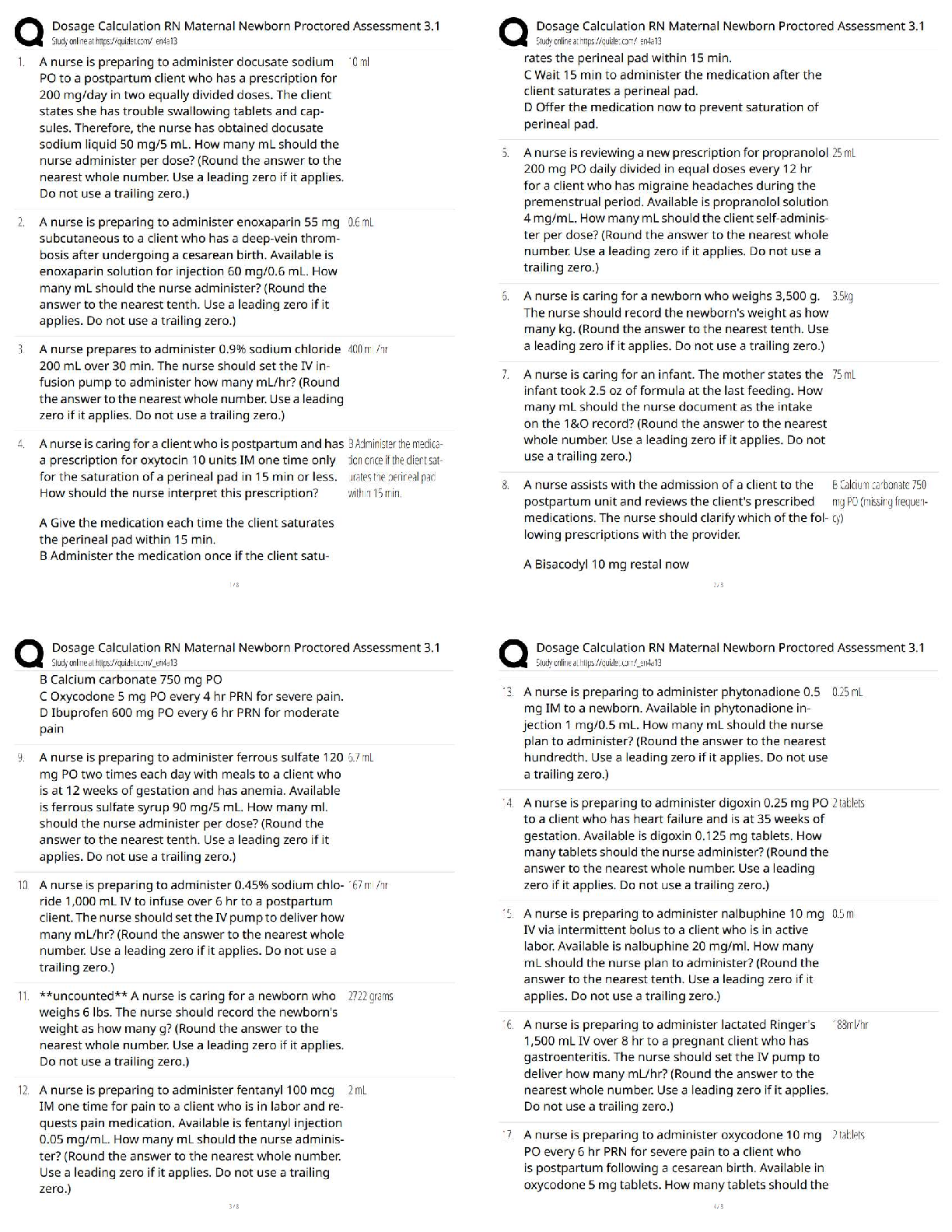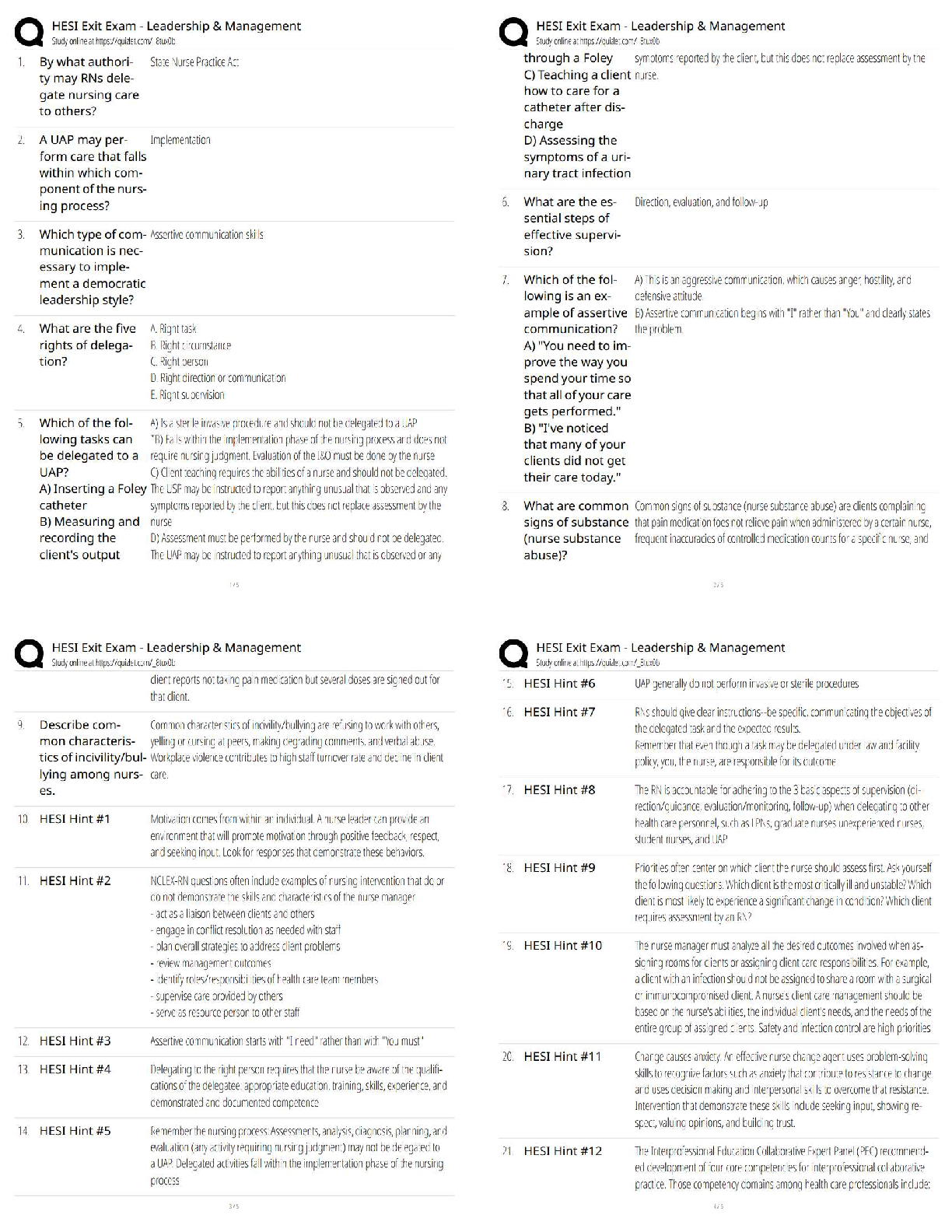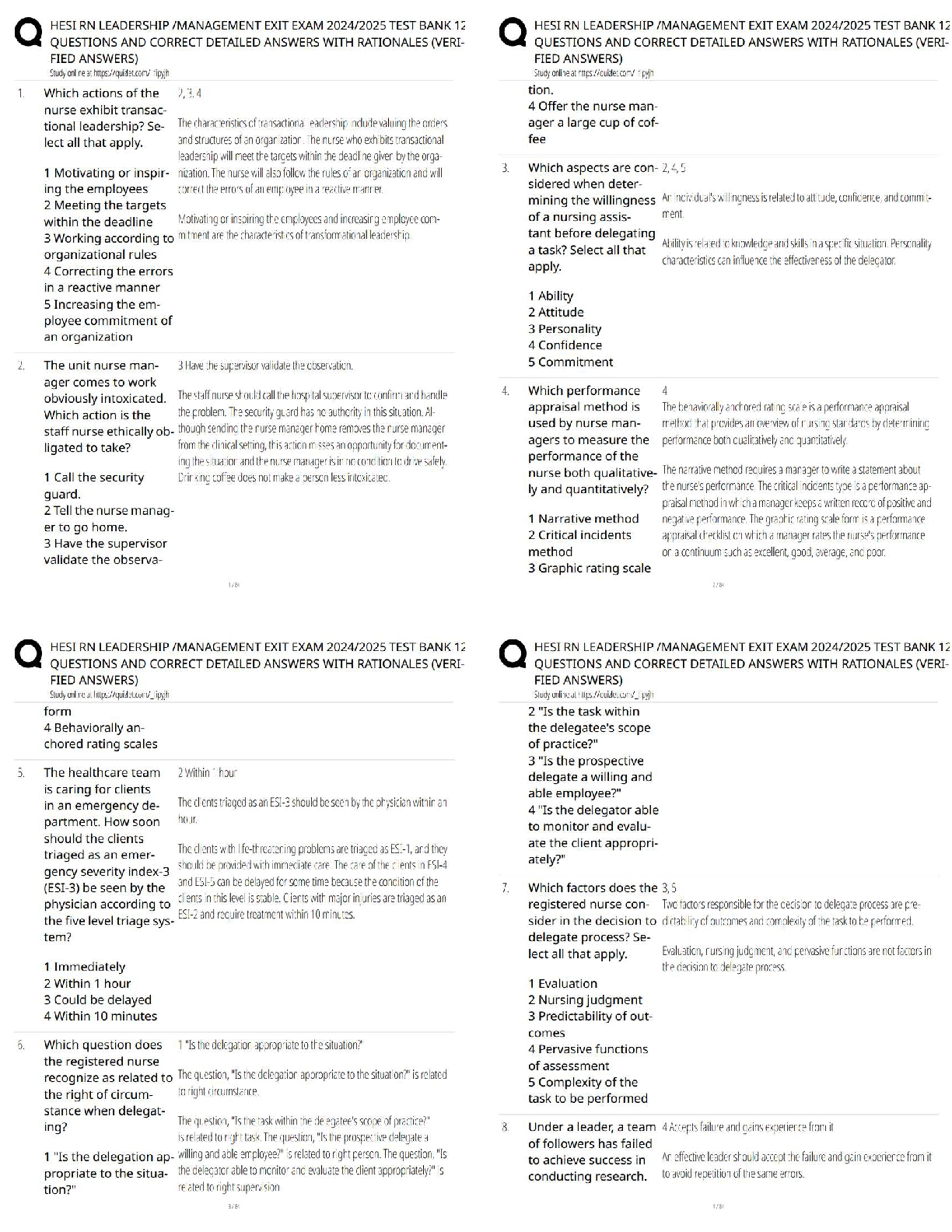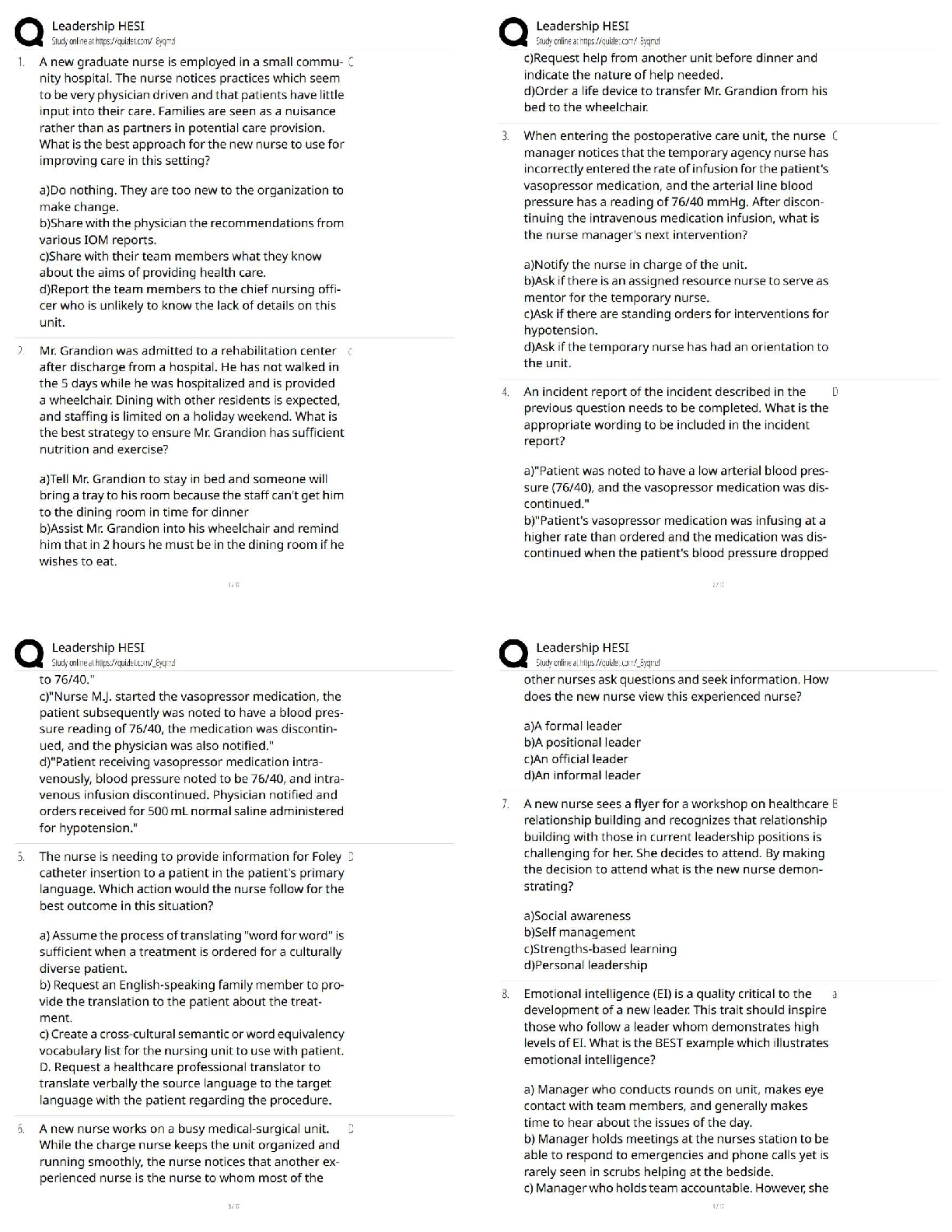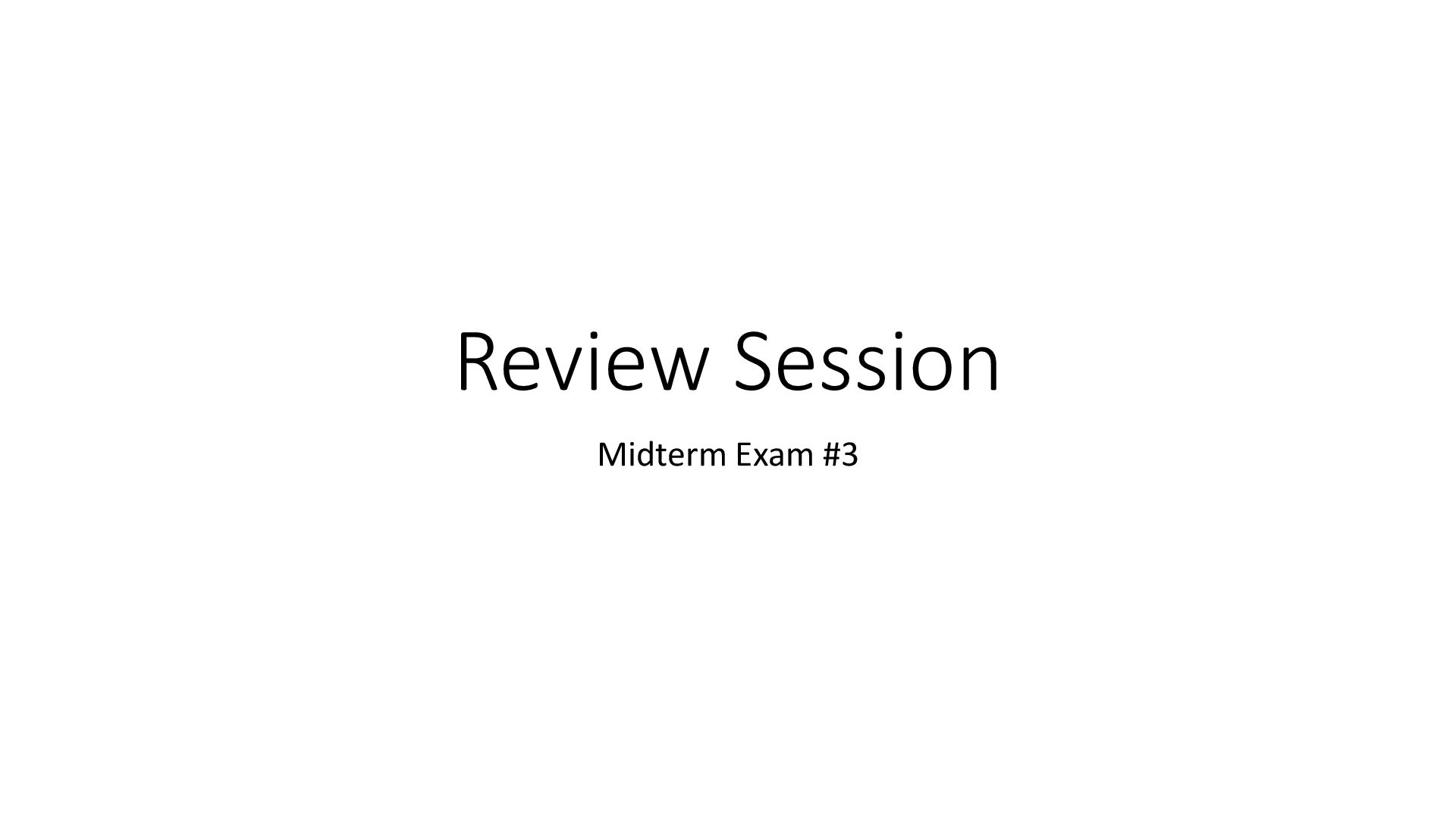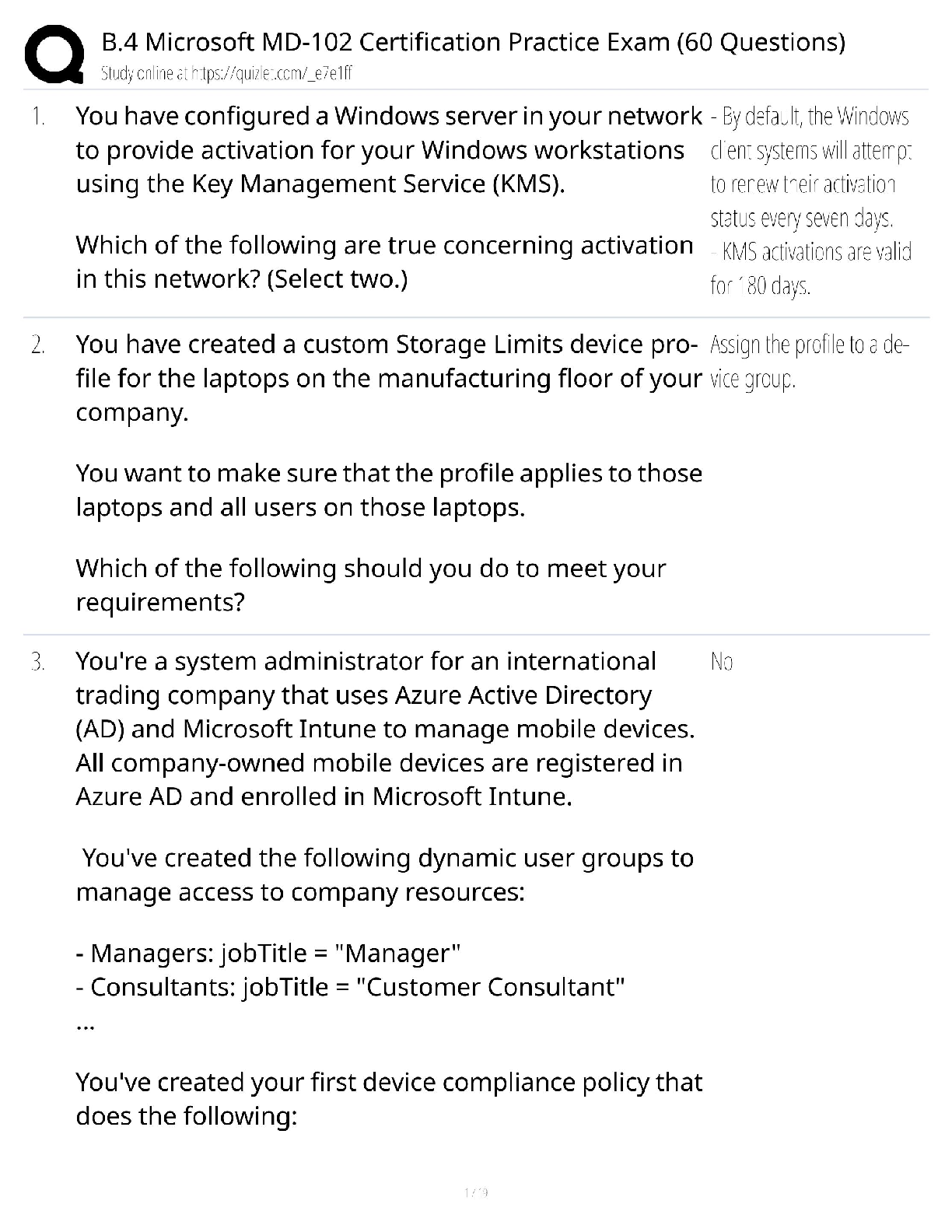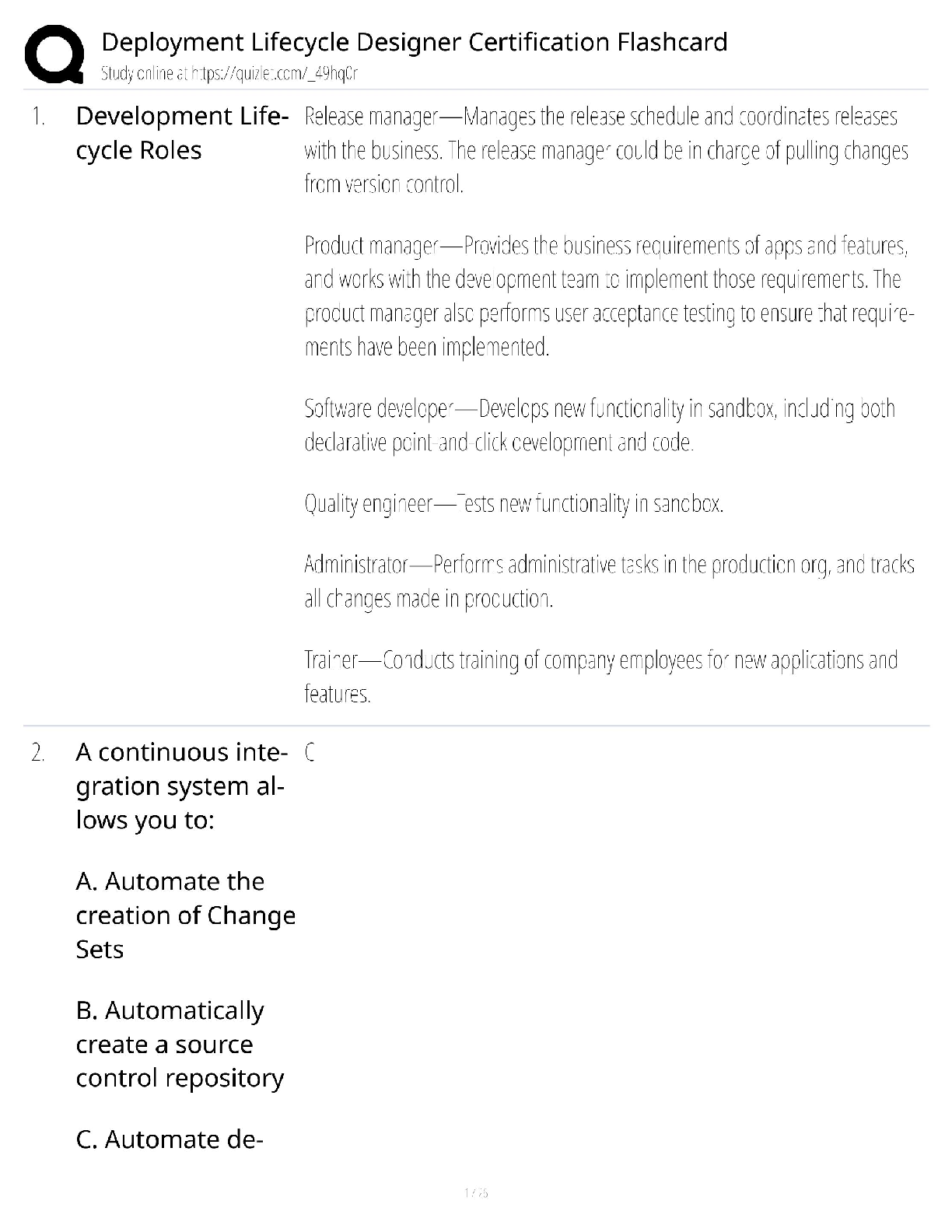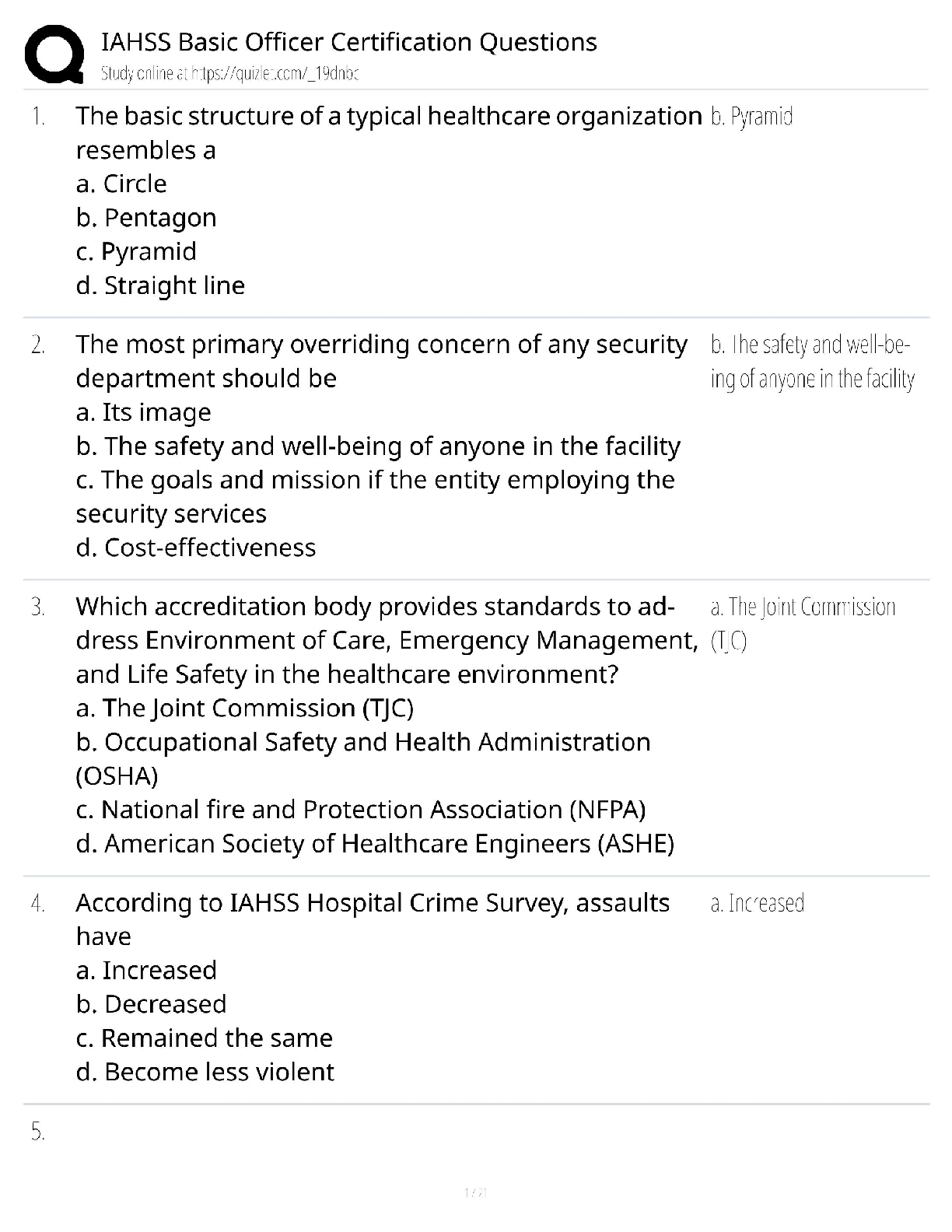Computer Science > QUESTIONS & ANSWERS > SQL (Structured Query Language) QUESTIONS AND ANSWERS ALL CORRECT (All)
SQL (Structured Query Language) QUESTIONS AND ANSWERS ALL CORRECT
Document Content and Description Below
SQL What is SQL? ans: SQL stands for Structured Query Language. SQL lets you access and manipulate databases. What can SQL do? ans: SQL can execute queries against a database SQL can retrieve d ... ata from a database SQL can insert records in a database SQL can update records in a database SQL can delete records from a database SQL can create new databases SQL can create new tables in a database SQL can create stored procedures in a database SQL can create views in a database SQL can set permissions on tables, procedures, and views What is RDBMS and what are some examples? ans: RDBMS stands for Relational Database Management System. RDBMS is the basis for SQL, and for all modern database systems such as MS SQL Server, IBM DB2, Oracle, MySQL, and Microsoft Access. The data in RDBMS is stored in database objects called tables. A table is a collection of related data entries and it consists of columns and rows. Are SQL queries case sensitive? ans: SQL keywords are NOT case sensitive: select is the same as SELECT What goes at the end of each SQL statement? ans: Some database systems require a semicolon at the end of each SQL statement. Semicolon is the standard way to separate each SQL statement in database systems that allow more than one SQL statement to be executed in the same call to the server. What is CRUD? ans: Create, Read/Retrieve (Select), Update and Delete are the four basic functions of persistent storage. SELECT Statement ans: The SELECT statement is used to select data from a database. Syntax: SELECT column_name, column_name FROM table_name; SELECT * FROM table_name; DISTINCT Statement ans: In a table, a column may contain many duplicate values; and sometimes you only want to list the different (distinct) values. Syntax: SELECT DISTINCT column_name,column_name FROM table_name; WHERE Clause ans: The WHERE clause is used to extract only those records that fulfill a specified criterion. Syntax: [Show More]
Last updated: 3 years ago
Preview 1 out of 13 pages
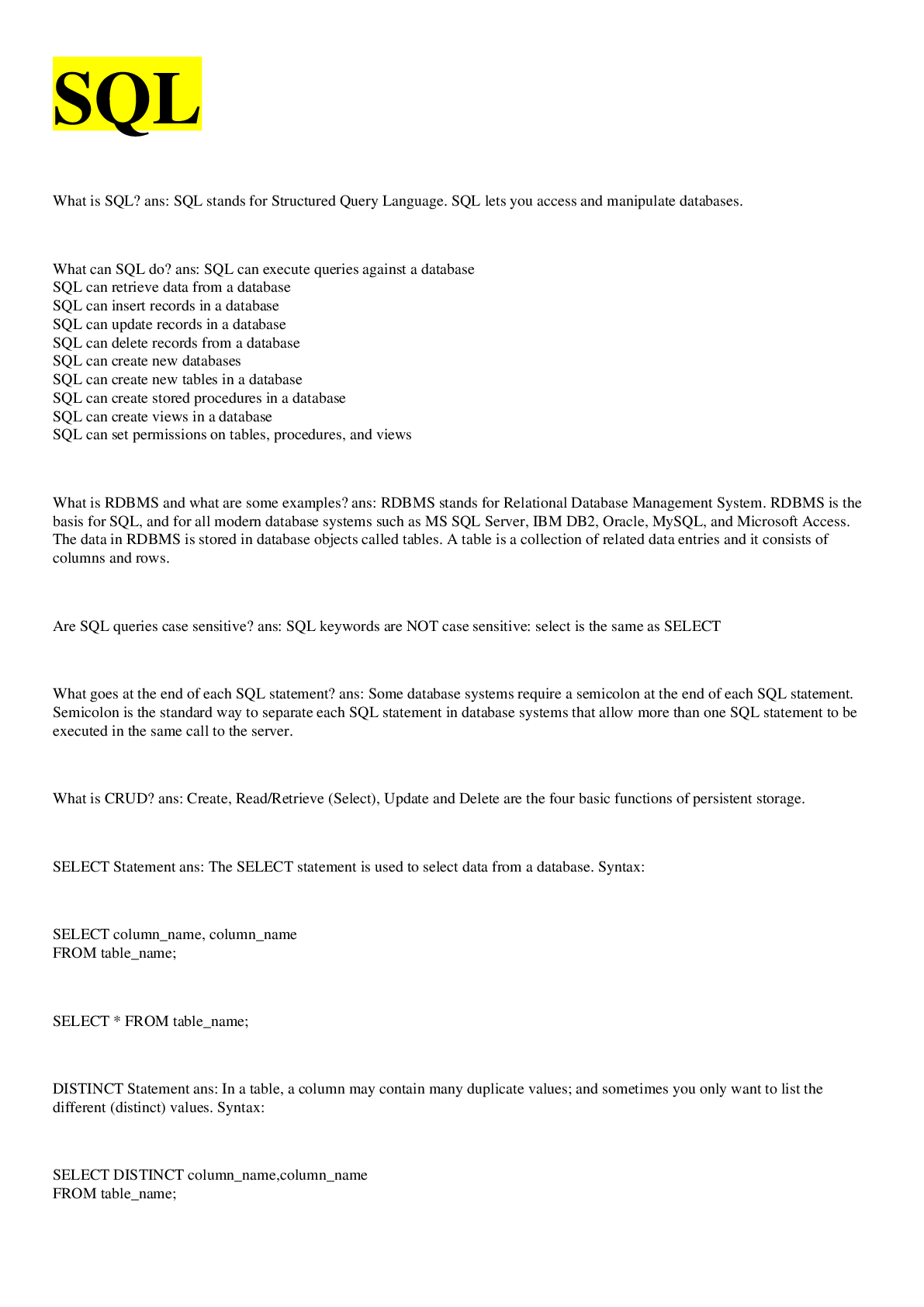
Buy this document to get the full access instantly
Instant Download Access after purchase
Buy NowInstant download
We Accept:

Reviews( 0 )
$10.00
Can't find what you want? Try our AI powered Search
Document information
Connected school, study & course
About the document
Uploaded On
May 23, 2022
Number of pages
13
Written in
All
Additional information
This document has been written for:
Uploaded
May 23, 2022
Downloads
0
Views
168

